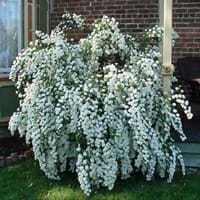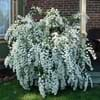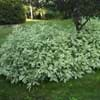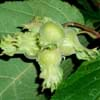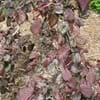Life Span
Perennial
Annual and Perennial
Type
Shrub
Bulb or Corm or Tuber
Origin
Southern Asia, Southeastern Asia, India, China
Central America, South America
Types
Not Available
Vine, Flowering plant
Number of Varieties
Not Available
Habitat
Cold Regions, gardens
All sorts of environments, Along Railroads, Banks, Moist Ditches, Roadsides, rocky banks of streams
USDA Hardiness Zone
9-12
10-13
Sunset Zone
H1, H2, 23, 24
21,22
Habit
Arching/Fountain-shaped
Vining/Climbing
Minimum Width
Not Available
Flower Color
White
Purple, Rose
Flower Color Modifier
Not Available
Bicolor
Fruit Color
Blue, Red
Not Available
Leaf Color in Spring
Green, Dark Green
Purple, Dark Green, Black
Leaf Color in Summer
Dark Green
Light Green
Leaf Color in Fall
Dark Green
Several shades of Green
Leaf Color in Winter
Dark Green
Light Green
Leaf Shape
Irregular
Acicular
Plant Season
Fall
Spring, Summer, Fall, Winter
Sunlight
Partial Sun
Full Sun, Partial Sun
Growth Rate
Medium
Very Fast
Type of Soil
Loam, Sand
Clay, Loam, Sand
The pH of Soil
Acidic, Neutral
Acidic, Neutral, Alkaline
Soil Drainage
Well drained
Well drained
Bloom Time
Fall, Late Fall
Late Spring, Early Summer, Summer, Late Summer, Early Fall, Fall, Late Fall
Tolerances
Not Available
Drought
Where to Plant?
Ground, Pot
Container, Ground
How to Plant?
Rooted stem cutting, Softwood cuttings, Stem Cutting
Cuttings, Leaf Cutting, Tuber propagation
Plant Maintenance
Medium
Medium
Watering Requirements
Average Water Needs, Do Not over Water, Requires regular watering, Water Deeply
Keep the Soil well drained, Needs very little water
In Summer
Lots of watering
Lots of watering
In Spring
Moderate
Moderate
In Winter
Average Water
Average Water
Soil pH
Acidic, Neutral
Acidic, Neutral, Alkaline
Soil Type
Loam, Sand
Clay, Loam, Sand
Soil Drainage Capacity
Well drained
Well drained
Sun Exposure
Partial Sun
Full Sun, Partial Sun
Pruning
Prune in late winter, Prune in spring, Remove damaged leaves, Remove dead branches, Remove dead leaves, Remove dead or diseased plant parts, Remove deadheads
Remove damaged leaves, Remove dead branches, Remove dead leaves
Fertilizers
All-Purpose Liquid Fertilizer, Apply N-P-K
All-Purpose Liquid Fertilizer
Pests and Diseases
Red blotch
Red blotch
Plant Tolerance
Not Available
Drought
Flower Petal Number
Single
Single
Foliage Texture
Coarse
Coarse
Foliage Sheen
Glossy
Matte
Attracts
Butterflies
Aphids, Beetles, Cutworms, Insects, Mites, Whiteflies
Allergy
Pollen
Abdominal pain, allergic reaction, Nausea, Skin rash, Twitching of face
Aesthetic Uses
Hanging Basket, Showy Purposes
Not Used For Aesthetic Purpose
Beauty Benefits
Not Available
Not Available
Environmental Uses
Air purification, Nesting sites for birds, Wildlife
Air purification
Medicinal Uses
Diarrhea, Diuretic, Fever
Cures constipation, Fiber, Low calories, lowering blood pressure, Potassium, ß-carotene, Vitamin A, Vitamin C
Part of Plant Used
Flowers
Leaves, Root, Shoots, Stem, Tuber
Other Uses
Used as Ornamental plant
Starch, Used As Food, Used as Ornamental plant
Used As Indoor Plant
Yes
Sometimes
Used As Outdoor Plant
Yes
Yes
Garden Design
Feature Plant, Mixed Border, Topiary, Bonsai, Espalier, Tropical
Container, Edible, Groundcover, Hanging Basket, Herb / Vegetable, Mixed Border, Rock Garden / Wall, Vine
Botanical Name
CLERODENDRUM wallichii
IPOMOEA batatas 'Blackie'
Common Name
Bridal Veil, Nodding Clerodendron, Wallich's glorybower, Nutan bleeding heart
Blackie Sweet Potato Vine, Sweet Potato Vine
In Hindi
Bridal veil plant
शकरकन्द
In German
Brautschleier Pflanze
Süßkartoffel
In French
usine de voile de mariée
Patate douce
In Spanish
planta de velo de novia
Ipomoea batatas
In Greek
Νυφικό πέπλο φυτό
Sweet potato
In Portuguese
planta véu de noiva
Batata-doce
In Polish
Welon roślin
Wilec ziemniaczany
In Latin
Flammeum herba
Ipomoea batatas
Phylum
Magnoliophyta
Tracheophyta
Class
Magnoliopsida
Magnoliopsida
Family
Verbenaceae
Convolvulaceae
Genus
Clerodendrum
Ipomoea
Clade
Angiosperms, Asterids, Eudicots
Angiosperms, Asterids, Eudicots
Tribe
Not Available
Not Available
Subfamily
Teucrioideae
Not Available
Number of Species
Not Available
Season and Care of Bridal Veil and Sweet Potato Vine
Season and care of Bridal Veil and Sweet Potato Vine is important to know. While considering everything about Bridal Veil and Sweet Potato Vine Care, growing season is an essential factor. Bridal Veil season is Fall and Sweet Potato Vine season is Fall. The type of soil for Bridal Veil is Loam, Sand and for Sweet Potato Vine is Clay, Loam, Sand while the PH of soil for Bridal Veil is Acidic, Neutral and for Sweet Potato Vine is Acidic, Neutral, Alkaline.
Bridal Veil and Sweet Potato Vine Physical Information
Bridal Veil and Sweet Potato Vine physical information is very important for comparison. Bridal Veil height is 76.20 cm and width 91.44 cm whereas Sweet Potato Vine height is 15.00 cm and width Not Available. The color specification of Bridal Veil and Sweet Potato Vine are as follows:
Bridal Veil flower color: White
Bridal Veil leaf color: Green and Dark Green
Sweet Potato Vine flower color: Purple and Rose
- Sweet Potato Vine leaf color: Purple, Dark Green and Black
Care of Bridal Veil and Sweet Potato Vine
Care of Bridal Veil and Sweet Potato Vine include pruning, fertilizers, watering etc. Bridal Veil pruning is done Prune in late winter, Prune in spring, Remove damaged leaves, Remove dead branches, Remove dead leaves, Remove dead or diseased plant parts and Remove deadheads and Sweet Potato Vine pruning is done Remove damaged leaves, Remove dead branches and Remove dead leaves. In summer Bridal Veil needs Lots of watering and in winter, it needs Average Water. Whereas, in summer Sweet Potato Vine needs Lots of watering and in winter, it needs Average Water.
